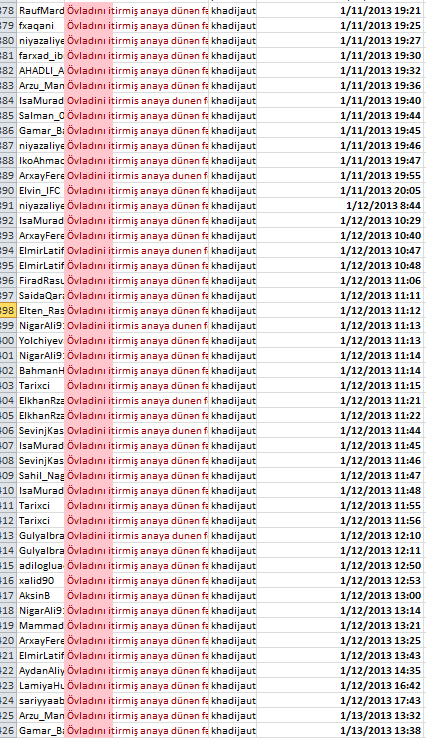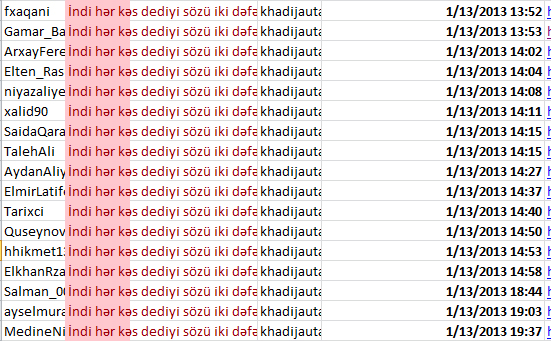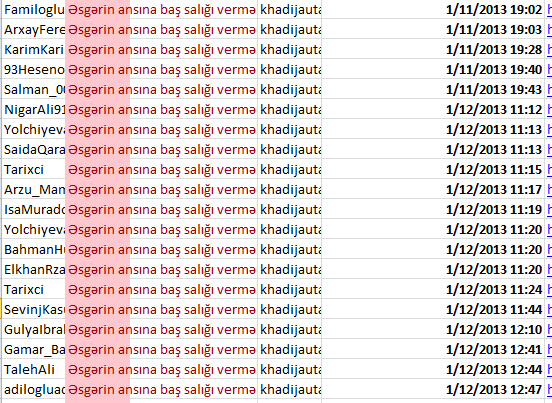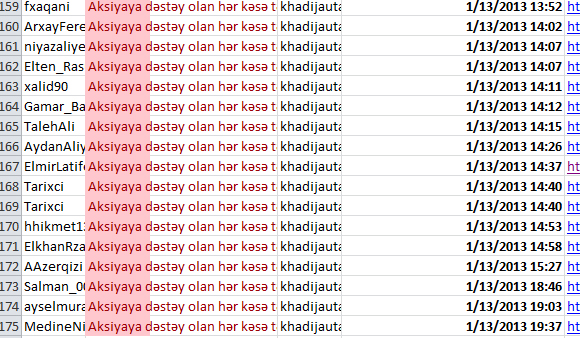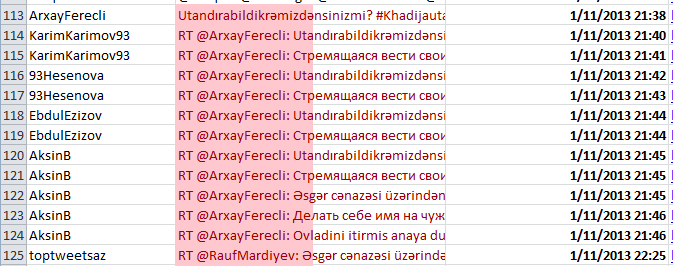What are these knots of string doing all over your blog, Katy?
For the last 2 weeks, I’ve been posting a lot of images on my blog, but I haven’t taken the time to explain what or why or how these are happening.
Azerbaijan, one of the countries that I study, is experiencing some turmoil right now. Briefly, a soldier was killed in the military as a result of hazing. There was a coverup, but it was found out and photos of the soldier’s body came out on social media. As a result, a demonstration was organized, mainly on Facebook, to protest this sort of thing occurring in the military. (It is not uncommon.)
On January 12, the protest occurred.
At first I was involved in social media as I normally am – retweeting, sharing stories, etc. because I have a general interest in democracy and technology in this country. But then I had an idea to analyze the tweets. This seemed especially important to me because there was a bit of a battle occurring on the main event hashtag #protestbaku between pro-government and more democratically-inclined social media users.
So, thanks to Marc Smith, the first social network analysis of the #protestbaku hashtag was created about 3 hours after the protest started using the NodeXL program.
What is a social network analysis? Via Wikipedia:
Social network analysis (SNA) is the methodical analysis of social networks. Social network analysis views social relationships in terms of network theory, consisting of nodes (representing individual actors within the network) and ties (which represent relationships between the individuals, such as friendship, kinship, organizational position, sexual relationships, etc.) These networks are often depicted in a social network diagram, where nodes are represented as points and ties are represented as lines.
And NodeXL is a free tool that works with Microsoft Excel to create interactive network visualizations. It is fairly easy to use once you get used to it.
So with this program, you can see who follows whom on Twitter, who replies to each other, etc. And then it shows this all visually.
After the first January 12 protest, I did a new analysis of all the tweets, then again after the weekend was over. Then a week later I ran the analysis again and again.
The pro-government social media users started a counter-hashtag to shame a journalist. I noticed that there were a lot of strange twitter accounts associated with that hashtag. Analysis of that is here and here. I’m not going to leap to any conclusions, but please read for yourself.
Then on January 23, a riot began in a regional city Ismayilli. There was much tweeting about it, mainly from people not on the ground. But once again I did analysis of the tweets. I also made a graphic of the changing dynamics of the hashtag.
Then on January 26, another protest was organized in Baku and once again the #protestbaku hashtag was used. I kept all the analysis on one page here.
—–
So why am I doing this?
- I am a social scientist. I like seeing patterns in things and I believe that this sort of modeling can add to understanding.
- I have the resources (time, computing power, skills) to do this.
- I like making analyses accessible to people that don’t have the skills that I do.
- I believe that information (to some extent) should be free. Moreover, I imagine that people in power have tools to understand networks like this and giving this information to everyone is more egalitarian.
- This information (social media data) is already out there in the world, just not organized in this way.
- I believe in freedom of expression. I am deeply sad that there is little freedom of expression in Azerbaijan.
- If this analysis can be a tool for those supporting freedom of expression, that gives me a great deal of joy. I hope that it is not also being used as a tool of suppression, but that is the price one pays for transparency and openness.
- It is possible that at some point I will write up some of this in the form of an academic article.
- I’ve received a lot of positive feedback from those involved in these events that this analysis has been useful to them. It isn’t often that this sort of thing can have an immediate application, so this is really cool.
In the meantime, I am happy to answer any questions about this.

